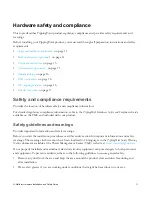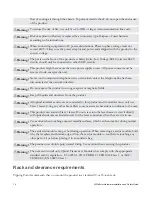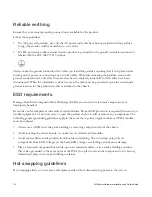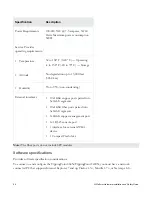
10
N-Platform Hardware Installation and Safety Guide
•
Application Protection
— Defend against known and unknown exploits that target applications and
operating systems:
• Attack Protection filters — Detect and block traffic known to be malicious, suspicious, and to have
known security implications. These filters include vulnerabilities and exploits filters.
• Security Policy filters — Detect and block traffic that might or might not be malicious. This traffic
might be different in its format or content from standard business practice, aimed at specific
software or operating systems, or contrary to your company’s security policies.
• Reconnaissance filters — Detect and block scans, sweeps, and probes for vulnerabilities and
information about your network. These filters include probes and sweeps/scans filters.
• Informational filters — Detect and block classic Intrusion Detection System (IDS) infiltration.
•
Infrastructure Protection
— Protect network bandwidth and network infrastructure elements, such as
routers and firewalls, from attack using a combination of filter types:
• Advanced DDoS filters — Available on the 2400E and 5000E. Detect and block denial of service
and flood requests, such as SYN Requests, that can overwhelm a system.
• Network Equipment Protection filters — Protect networked equipment from attacks.
• Traffic Normalization filters — Detect and block abnormal or malicious traffic.
•
Performance Protection
— Allow key applications to have a prioritized bandwidth-access setting that
ensures mission-critical applications have adequate performance during times of high congestion:
• Misuse and Abuse filters — Protect the resources and usage of file sharing across networks and
personal computers. These filters protect peer-to-peer services.
• Traffic Management filters — Protect the network by shielding against IP addresses or permitting
only a set of IP addresses.









































